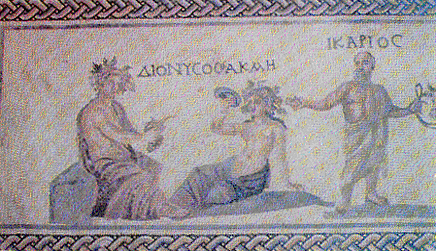
Rule
of the Ptolemies & The Hellenistic Influences
Freedom from the Persians finally came in 333 B.C. when
Alexander the Great decisively defeated Persians at the Battle
of Issus. A short time later, the Cypriot kings were granted
autonomy in return for helping Alexander at the siege of Tyre,
but took from them the right of coinage.

Mosaics from
the Hellenistic period
The death of
Alexander in 323 B.C. signalled the end of that short period of
self-government. Alexander's heirs fought over Cyprus, a rich
prize, for several years, but in 294 B.C. it was taken by
Ptolemy I, one of Alexander's generals, who had established
himself as satrap (and eventual king) of Egypt. He forced
the last king of Salamis, Nicocreon, to commit suicide in 310
B.C., together with all his family; their cenotaph, a
particularly fine specimen containing ornaments and clay
effigies of the royal families, has been discovered at
Salamis.
For two and a
half centuries Cyprus remained a Ptolemaic possession, ruled by
a strategus, or governor- general. Under the rule of the
Ptolemies, the city-kingdoms of Cyprus were abolished and a
central administration established. The Ptolemaic period, marked
by internal strife and intrigue, was ended by Roman annexation
in 58 B.C.
References
